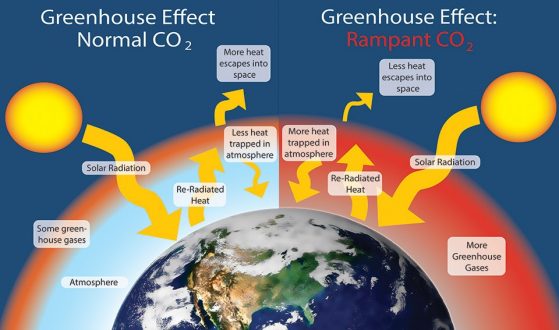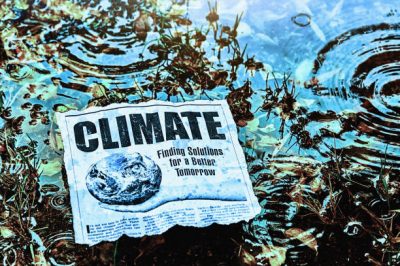These days, people are talking a lot about something called “climate change.” It’s a big topic both around the world and in our own countries. But first, let’s understand the difference between weather and climate.
Weather
Weather is about what’s happening outside right now, like whether it’s sunny, rainy, hot, or cold. It changes every day because of things like air pressure, temperature, humidity, wind speed, and direction.
Climate
Climate is about the usual weather patterns in a place over a long time. It tells us what the weather is typically like in a certain area. When scientists talk about climate, they look at the average temperature, humidity, rainfall, and wind patterns over many years, usually around thirty.
Now, let’s talk about climate change:
Climate change is when the usual weather patterns in a place start to shift over a long time. It’s caused by things like pollution from cars and factories, cutting down trees, and other human activities.
These changes can make the weather hotter, colder, wetter, or drier than it used to be. Climate change is a big problem because it can cause floods, droughts, storms, and harm to animals and plants.
There are many elements of climate change, but among them, I want to share very common and serious events with you so that we can help as much as we can and save our climate.
Greenhouse Gases Emission
You must have heard about Greenhouse Gases Emission (GHG) and the greenhouse effect, which causes warming in winter for plants. It involves placing a plastic sheet over plants, a practice we often see, causing the plastic to trap heat from the sun inside, making the temperature rise.
This creates a favorable environment for warm plants and also benefits vegetables and crops. Same as the greenhouse gases that we humans create. It creates a layer in the atmosphere and causes the warmth to stay here. It’s similar to what I mentioned about plants; warmth comes and stays here. It doesn’t go back out, which is why the temperature is increasing in this world.

The warmth trapped in the air is due to a phenomenon called the greenhouse effect. Certain gases in the Earth’s atmosphere, known as greenhouse gases, act like a blanket, trapping heat from the sun and preventing it from escaping back into space. These gases include carbon dioxide (CO2), methane (CH4), nitrous oxide (N2O), and fluorinated gases.
Here’s how it works
- Sunlight reaches the Earth’s surface and warms it up.
- As the Earth’s surface warms, it emits heat energy in the form of infrared radiation.
- Greenhouse gases in the atmosphere absorb some of this infrared radiation.
- Instead of allowing the absorbed heat to escape into space, the greenhouse gases re-radiate some of the heat back toward the Earth’s surface.
- This process helps to keep the Earth’s surface warmer than it would be otherwise, creating a stable and habitable climate.
Over consumption of Water in our Daily life
In Pakistan, we often install water machines or hand pumps in our homes and extract more water than necessary. I think it’s my home’s water, and I can use it as much as I want. But it’s not like that; the water on this Earth is equally distributed among all humans.
If you’re using more water than necessary, you’re depriving others of their rights. Whatever water there is in a village, everyone gets an equal share. There’s a wave of water under the ground. If you’re extracting more water from your machine, you’re pulling water from others underneath, which means others cannot access water properly.
Also Read: Pakistan and UAE Ministers Meet at Nuclear Summit
The Role of Our Internet Usage in Climate Change
Our internet habits are also responsible here. Every email sent, movie streamed, or question Googled adds carbon dioxide to the environmental system. It’s a small amount for each online activity, but when added up, it’s equivalent to 3.7% of global greenhouse gas emissions, or about 1.3 billion metric tons annually. It’s roughly equivalent to the combined annual emissions of Brazil, South Africa, and Turkiye, and it is equal to pre-pandemic airline industry emissions.
The environmental effects of our daily internet habits contribute up to 3.7% to global greenhouse gas emissions, which is equivalent to pre-pandemic airline industry emissions.
Climate Change in Pakistan
According to experts, the dangerous floods in Pakistan in 2010 and 2022 were also due to climate change.
Climate change can become a significant challenge for Pakistan. To reduce these risks, civil society and the government should collaborate effectively at all levels. Annually, this means that in the past 50 years, the temperature has increased by about 0.5 degrees Celsius in Pakistan.
The number of hot days has almost doubled in the last 30 years with the heatwave. Although annual rainfall is traditionally very different, there has been a slight increase in the past 50 years. Karachi’s coast has seen an increase of almost 10 centimeters in sea level over the past century. By the end of this century,
An increase of 3 to 5 degrees Celsius in the annual average temperature is expected in Pakistan. Pakistan has one of the riskiest levels of disasters in the world, ranking 18th out of 191 countries in the 2020 Inform Risk Index.
Scientists’ Predictions on Global Warming
Scientists have set a ‘safe’ limit of a 1.5-degree Celsius increase in temperature for global warming. If the temperature rises, adverse changes can occur in the natural environment, affecting human lifestyles. Many scientists believe this will happen, and an increase of 3 degrees Celsius or more is predicted by the end of the century. There will be various effects worldwide:
- Britain may face severe floods due to extreme rainfall.
- Island nations with high levels may be submerged due to rising sea levels.
- Many African countries may suffer from droughts and food shortages.
- North America’s western parts may be affected by worsening droughts, while other regions may experience increased rainfall and more severe hurricanes.
- Australia may face intense heat and severe drought conditions.
What can people do?
Scientists say people can take the following steps:
- Reduce dependence on cars by using public transportation or cycling for travel.
- Insulate your homes.
- Reduce air travel.
- Reduce consumption of meat and milk.
Political Analyst | M.Phil. Scholar







